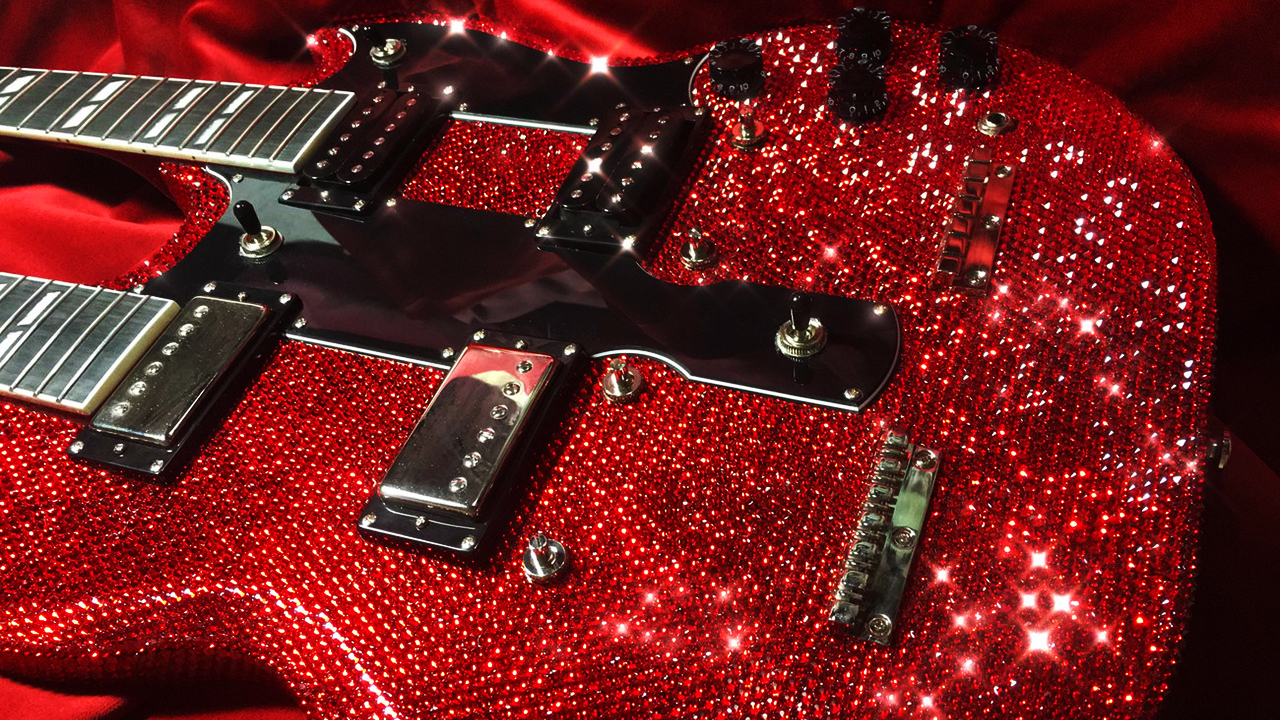
Zoe Brodie-James has put a ton of glitz and glamour out into the world. Through Crystal Skins, the English entrepreneur has been customizing sparkle-heavy, crystal-emblazoned microphones, guitars and accessories for film, TV and the music business since 2002.
Her bespoke rhinestoning has been seen by millions on TV shows like The X-Factor. Right now, you can even see one of her most scintillating, shimmering mics in the hands of none other than Taylor Swift – kind of: a wax statue of the Eras phenom is currently clutching one of Brodie-James’ dazzling, Austrian crystal-adorned pieces at the Madame Tussauds museum in London.
Swift has been a reference point for Brodie-James since the musician used a bejeweled Taylor acoustic through 2009’s Fearless tour, leading to a request from a British fan for a similar rhinestoned decoration.
The commission came after a brief to decorate the world’s most valuable portable commode. “There was a lady who made some kind of genius potty for her children – she’s now a multi-millionaire – and she wanted it covered in crystals,” Brodie-James explains of that piece, valued at £700 [approx. $890] in 2011. “Her daughter was a massive Taylor Swift fan, so I did a guitar for her.”
While she accepts customizing guitars is a more niche business than adorning mics and phone cases, she’s nevertheless put together an impressive collection of stringed instruments.
A color-changing Jackson Dinky refracts luxurious blues and gold; she doubled-down on deep crimson allure while crystal-coating a cherry-red double-necked SG; and she’s made intricately spangled ukuleles for private collectors.
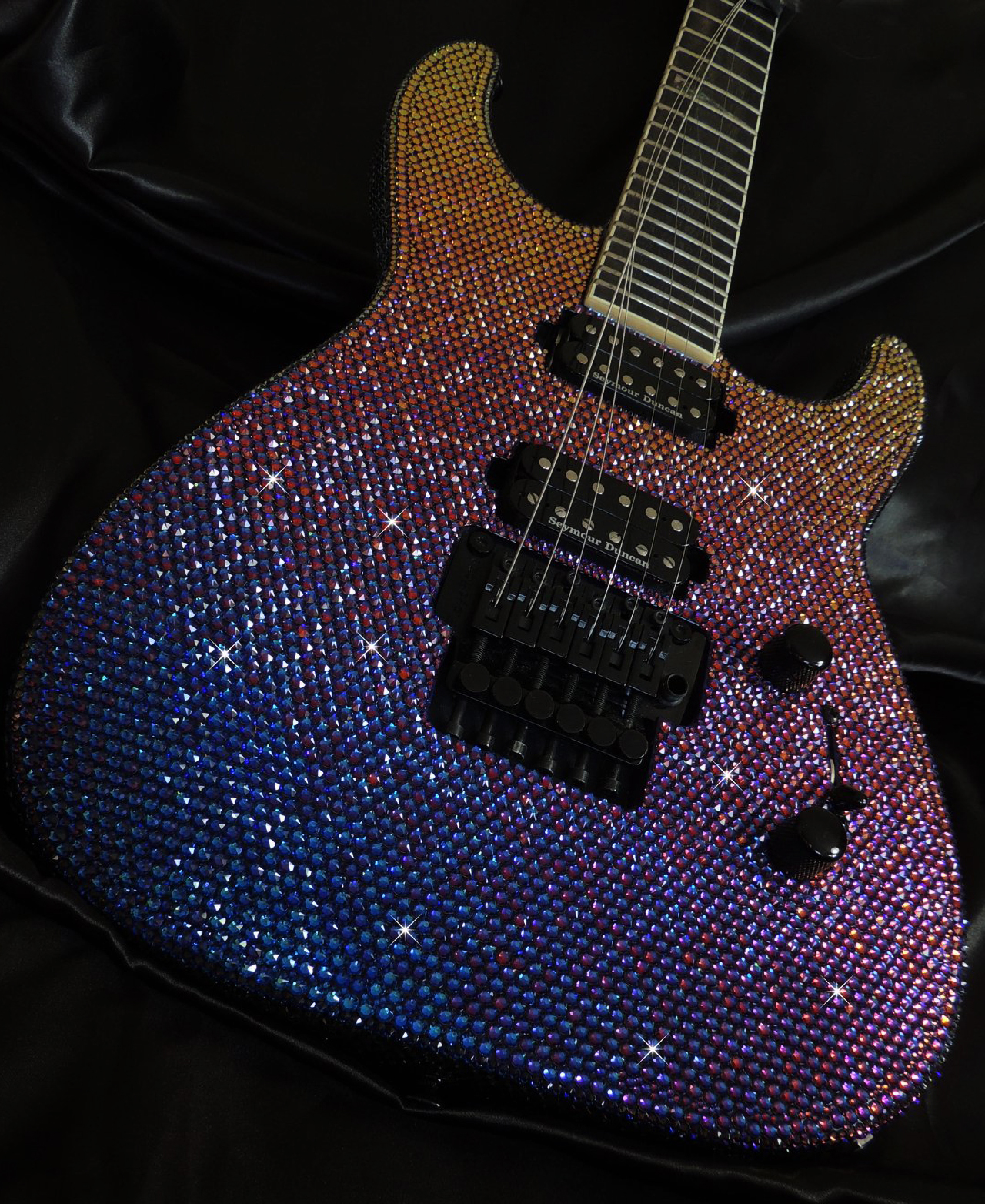
Were there any similarly flashy instruments that caught your eye before you started customizing on your own?
“I suppose the biggest inspiration point would be Liberace’s piano – but Taylor Swift was the first person I saw that had a sparkly guitar. Dolly Parton might have had one as well – the country and western singers are very much into their rhinestones.”
Did you start out customizing lower-scale guitars before working up to Jackson Dinkys or Gibson Flying Vs?
“The first one I did was for a lady named Debby Wingham, who made the world’s most expensive dress – it was basically covered in diamonds. She wanted a dazzling guitar to go with all her stuff for a photoshoot in Italy. That was just a cheap guitar. It cost £35 [approx. $45], so I wasn’t too worried about messing that up.
“But one time there was a private collector – a multi-instrumentalist, just the most talented, lovely man – he looked a bit like Prince, actually. He turned up with a Cherry Red Gibson Flying V and I was like, ‘Are you sure you want to customize that?’
“I was really hesitant to do it, because it was such a beautiful thing already. But he was absolutely adamant that he wanted it done. At first he wanted to change the color to black, but I put my foot down and said, ‘No, it’s got to stay Cherry Red.’”
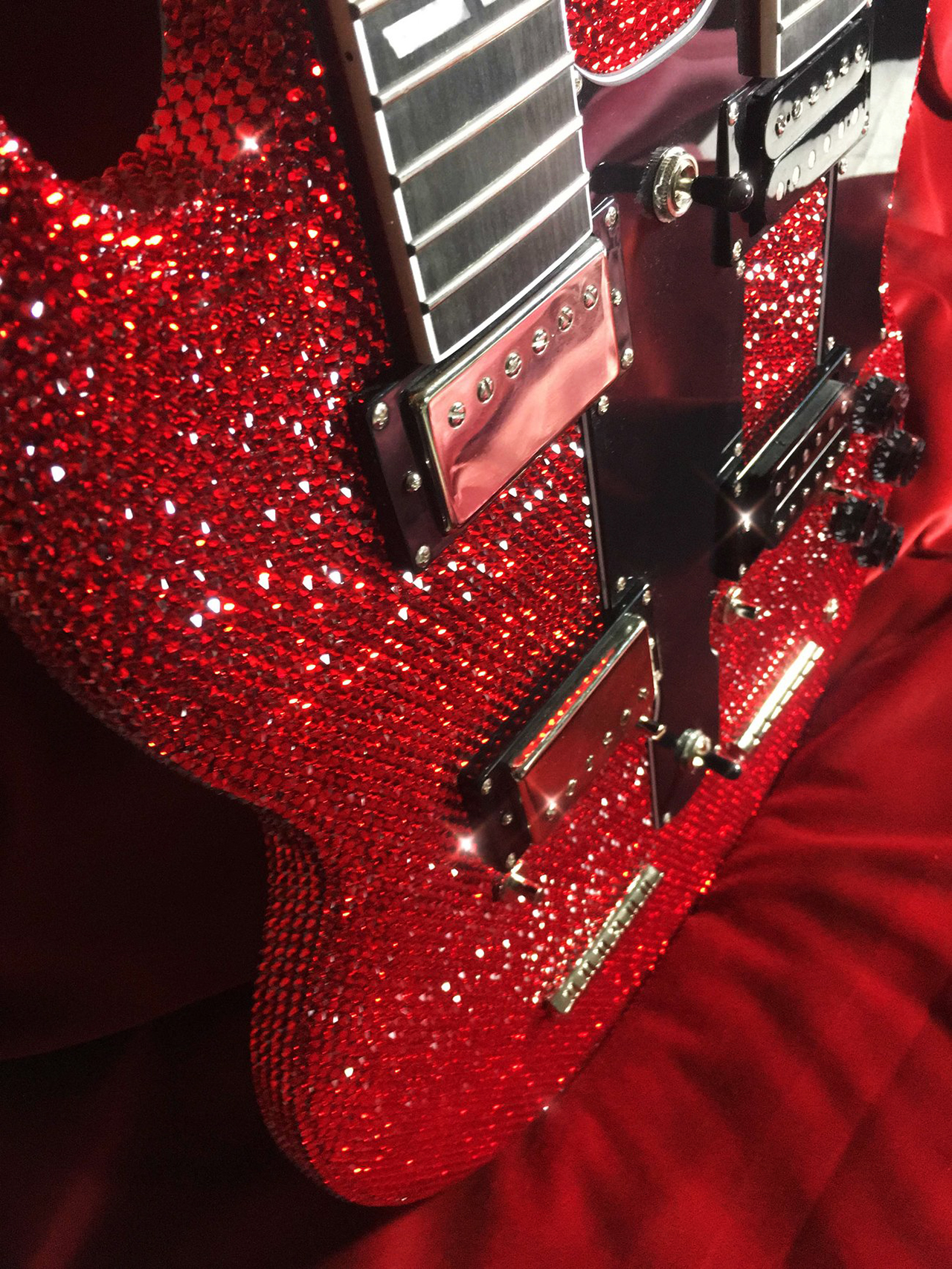
How long does it take to stone up a full guitar?
“About a week, because you can’t do it in one go. I use a two-part epoxy resin, and it’s very slow-drying. You can only do a section at a time. Then you monitor it for three to four hours to make sure everything is set in place.
“You have to wait before you carry on into the next bit. You can’t just bash it out. Well, some people do; people use all manner of glues, but I prefer to use a professional glue and do it properly.”
On average, how many crystals do you glue onto a standard six-string guitar?
“It depends on what size of crystal you’re using; and also, you use all sorts of different sizes to fill gaps and the intricate work around the headstock. But probably between 6,000 and 10,000.”
How much weight does that add to a guitar?
“Not a massive amount. Like, the Gibson Flying V is a heavy instrument anyways. I have noticed, though, that people who use them onstage tend to only use them for one or two songs before putting it away. I’ve always wondered how much they affect the sound of the guitar, or whether people use these just for show.”
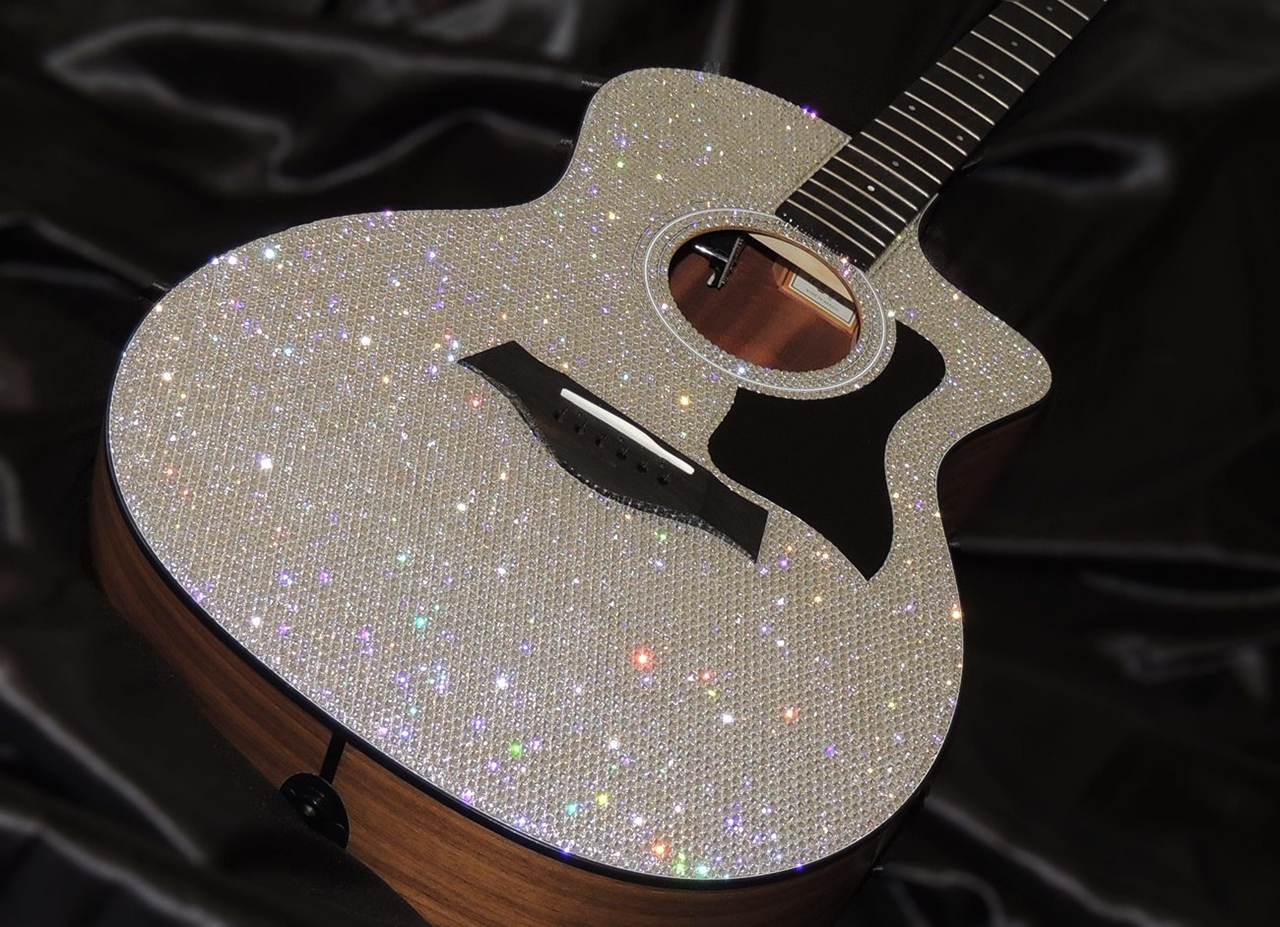
That’s interesting, because you also customize acoustics and here’s obviously a different kind of resonance to acoustic tonewoods. Do you ever strum these as you’re working on them, to see if the tone’s being affected?
“No – I have a policy that they have to come to me unstrung. I send them back unstrung as well. I don’t get involved in stringing it up; to me that’s a very personal thing. The guitar isn’t going to sound the same when it goes back. It’s definitely going to make a difference, but the exact difference, I’m not sure of.”
What are some of the other challenges that come along with your craft?
“Microphones have all that delicate technology inside of them. You’ve only got to drop it or jiggle a wire out of place and that’s a microphone down the pan.
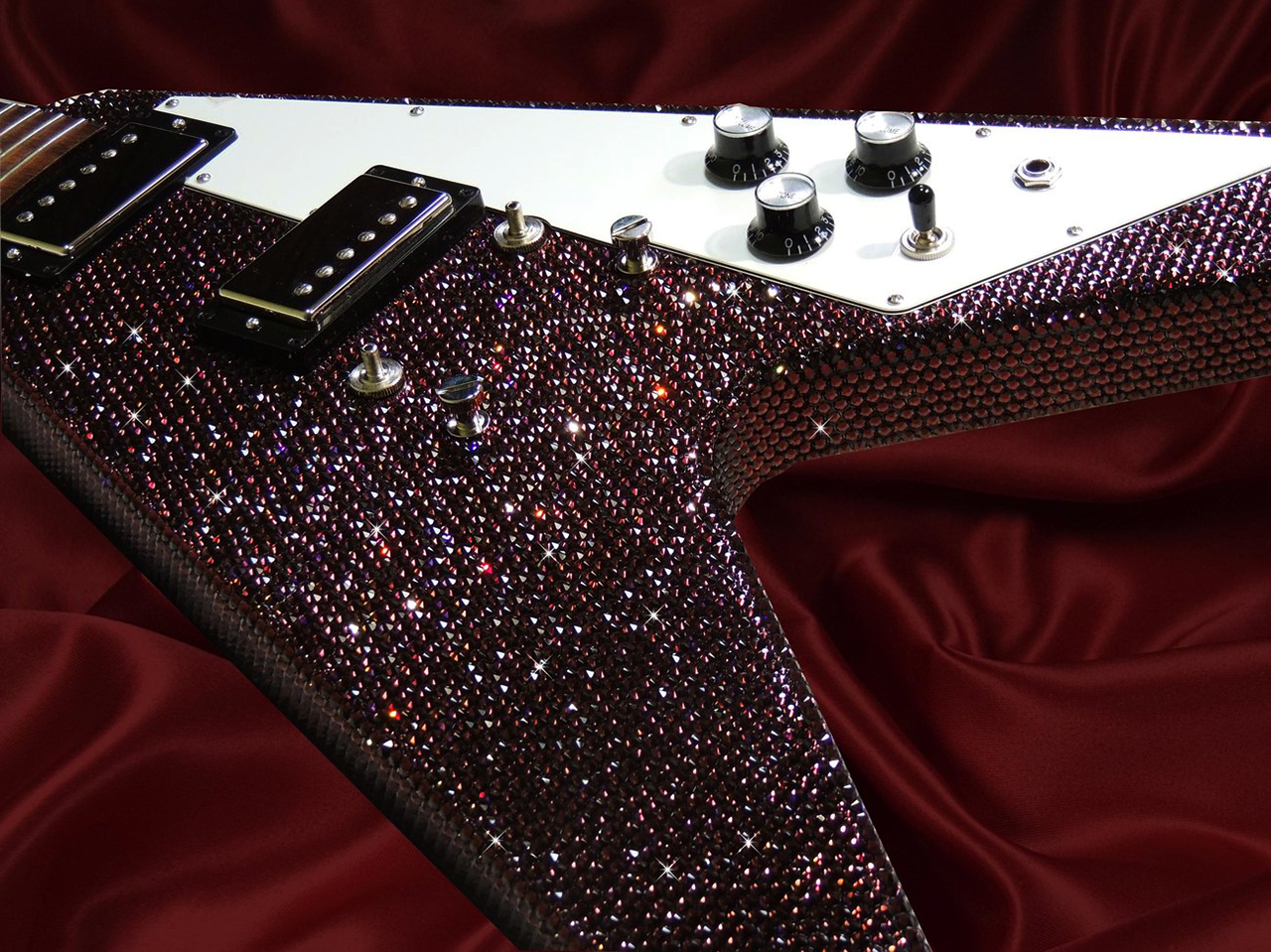
“When I first started out, somebody sent me a mic and I glued the battery compartment shut. I sent it back to them all proud, but they were like, ‘I can’t get my batteries out!’ I was absolutely mortified. That’s never happened since.
“You just have to be careful. People are very specific with how they want their mic, or where the guitar sits on their body. You have to make sure that these are still usable, and that they’re not going to get damaged when they’re in use. It’s the tool of their trade – It’s a big responsibility.”
How often do people send their livelihood your way?
“Guitars, hardly ever; it’s a very niche market, normally for private collectors. I did a ukulele for Mick Jagger’s ex-wife, Jerry Hall. Bob Geldof’s wife, Jeanne Marine, had a couple of ukuleles done.
“With microphones, I get an awful lot of jobbing bands that want them done. A lot of them buy microphones straight from me, but a few people do like to send their own mics in.”
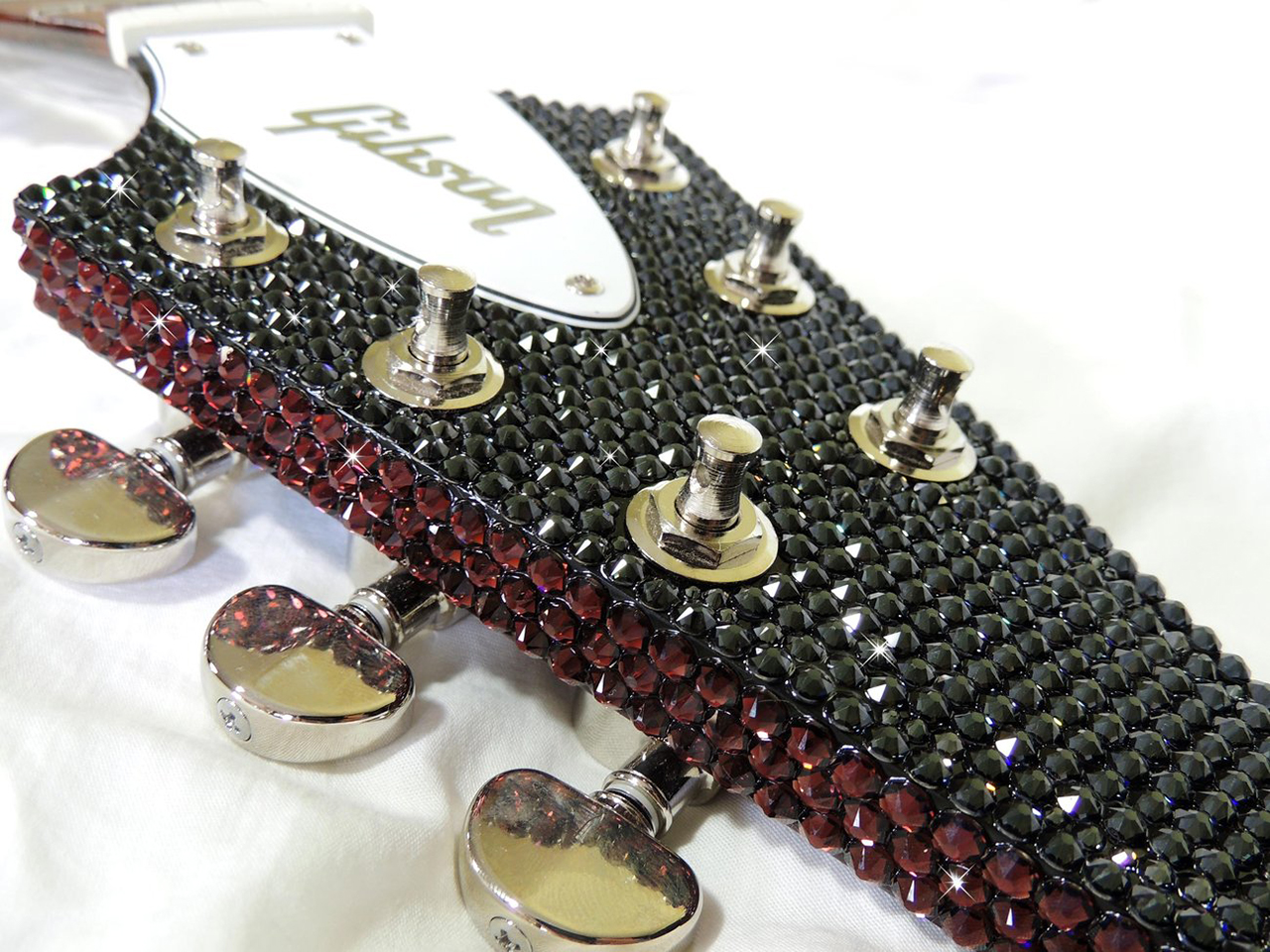
Have you seen any of your work on stage?
“Not in the flesh, but obviously I do a lot of stuff for TV production companies. There was some stuff for [British TV contest] Strictly Come Dancing, and The X Factor. I did some stuff for a fairly large movie that was out last year. I signed an NDA, so I’m not allowed to tell you what it is… but think very pink. I do quite a lot of work for Madame Tussauds, as well.”
Would you ever try working with precious gemstones, like Padparadscha sapphire or Colombian emerald?
“Some people have said that: ‘Have you ever considered making something with real diamonds?’ I think I’d be absolutely terrified to work with them, to be honest. And it would cost too much money. Nobody would want to spend that much money on it.
“The Austrian crystals themselves are crazy money, though. A pack of 1,400 crystals will set you back around £120 [approx. $150]. That’s expensive enough!”
How many colors do you have at your disposal?
“You name it, I’ve got it. I would say there’s at least 80 color variations, and you can blend them all. It’s the colors that really excite me about the work, and they’ve absolutely got to be right. The Jackson was a really lovely blue that changed color to gold depending on how you moved the instrument.”
Are there any go-to shades you’d recommend?
“Red looks absolutely gorgeous. It’s a sparkly, deep color. Don’t bother with light pastels, pink or anything like that. Choose a really strong color.”
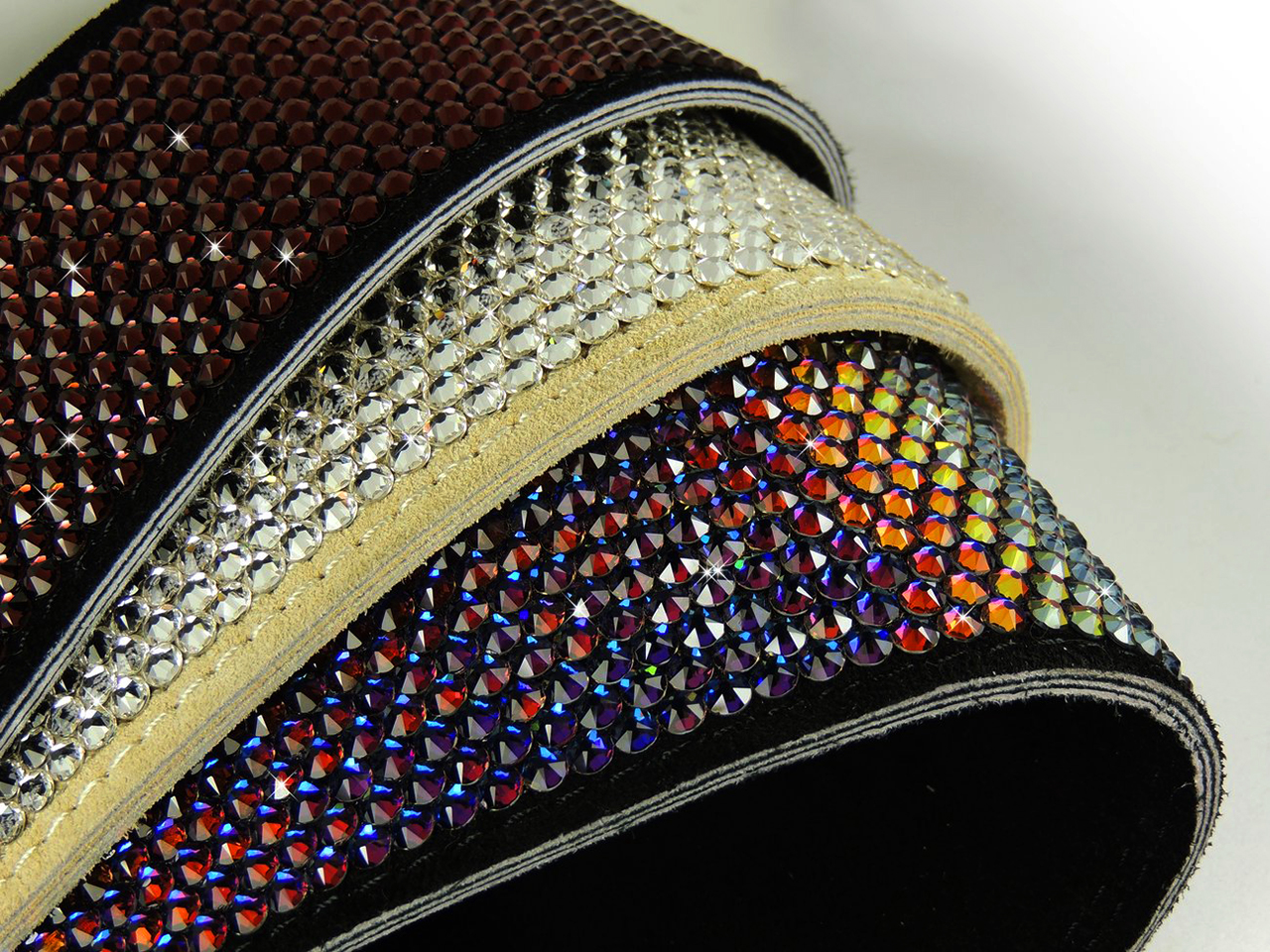
Are there any guitar shapes you’d like to try next?
“I’d really like to do a Fender Stratocaster, because David Gilmour obviously played the 0001, and it sold for $3.9 million. The Strat has always been my favorite –that’s the epitome of the perfect guitar; just a really lovely, classic look. I don’t think I could touch an original ‘50s or ‘60s Strat, but I’d like to do a modern one.”
If you were to play a lick on one of your customized guitars, what would you be strumming?
“I’d really like to learn how to play The Way You Used to Do by Queens of the Stone Age. That riff just blew me away when I first heard it – never heard anything like it. I’d sit and watch them play it for ages, thinking, ‘How do they do that?’ It sounds so simple, but it’s not, is it?”
Maybe you could put together some sort of deal: if you customize their instruments, they can teach you the riff.
“Well… one can dream!”
- For more info, see Crystal Skins.







